Padrón, Spain: Peppers, Pilgrims, & Poets
Everyday on the way to and from school, I pass through the town of Padrón, situated about halfway between Santiago de Compostela where I live and Boiro (on the coast) where I work. Just barely inland, Padrón straddles the Sar River before it empties into the estuary called the Ría de Arousa.
A small but proud village of almost 9,000, Padrón dates back to Roman times when it was known as Iria Flavia (which is still the name of a parish to the north of the city center). Today, it’s known for producing peppers of the same name, for being a major stop along the Camino de Santiago, and for being home to two significant poets in the Galician language.
Even non-Galicians have heard of Padrón at least once, if only for the famous peppers that originated just outside the city center in the parish of Herbón. Brought to the area by Franciscan monks after the Spanish conquest of the Americas, these pimientos de Padrón have been cultivated for centuries and are now a part of the Spanish national cuisine.
Typically fried in olive oil and garnished with chunky sea salt, they are rarely, if ever, spicy…however, they are infamous for heating up once in a blue moon. As the Galician saying goes, “Coma os pementos de Padrón: uns pican e outros non” (“Like Padrón peppers: some are spicy and others are not”). These peppers are in season from May to November, although every now and then you can find them in plastic bags in the supermarkets thanks to year-round greenhouses.
As the final stage along the camino portugués or “Portuguese Way” of the Camino de Santiago pilgrimage route, Padrón sees hundreds of pilgrims pass through each day in the height of summer, and even in cold, rainy November, we drive by a handful of weary peregrinos trudging along who will arrive in Santiago later that day.
Padrón plays an important role in the tradición Xacobea, or collection of stories and legends surrounding the life and death of the Apostle St. James the Greater. Foundational to the city of Santiago de Compostela is the claim that the cathedral guards the true remains, the relics, of St. James. According to legend, James came to Roman Hispania to evangelize after the death and resurrection of Jesus, stopping first in what was then Iria Flavia (modern-day Padrón). He traveled all around Spain, Mary appeared to him in Zaragoza, and he came back to Jerusalem where he was martyred. His disciples brought his body back to Spain and docked here in Padrón at a large mooring stone called the pedrón, where today’s city takes its name from. You can see the supposed stone in the Church of Santiago in downtown Padrón.
Iria Flavia (one of Padrón’s parroquias or parishes) was actually the region’s main cathedral city from Visigothic times onward, until the discovery of St. James’ remains caused the bishops to move to Compostela, where the cathedral has remained to this day. The former cathedral was destroyed in the year 999 in a raid by al-Mansur, the ruler of the Caliphate of Córdoba to the south. Although the contemporary church we see today was primarily designed in the Baroque style, it has a pointed Romanesque west portal and the cemetery outside holds the graves of 22 bishops.
Padrón is also famous for being home to perhaps the greatest of all writers in the Galician language, Rosalía de Castro (1837-1885). For centuries, galego (Galician) languished as stigmatized, rural dialect, while Castilian ruled the day in the courts and the cities. In the Middle Ages, Galician-Portuguese speakers were some of the most prolific and talented poets, among them even a king of Spain, Alfonso X. But when Castilian became the official language of the realm, Galician entered its own “Dark Ages.”
In the 1800s, however, there was a rexurdimento or “resurgence” of the written language, spearheaded by poets like Padrón local Rosalía. Her most famous works include Cantares Gallegos (“Galician Songs”) and Follas Novas (“New Leaves”). Today you can visit the house she lived in, which is now a museum dedicated to her legacy.
Padrón also produced a recipient of the Nobel Prize in Literature, Camilo José Cela (1916-2002). I honestly don’t know that much about the author, but he wrote primarily in Spanish, publishing several acclaimed novels and short stories. Unfortunately, he left most of his inheritance to his second wife, who hasn’t cared much to share his papers with the Camilo José Cela Foundation, which operates a museum across the street from the church in Iria Flavia.
Many villages in modern-day Galicia are the result of folks leaving rural areas and moving into new apartment blocks constructed in the last several decades, which were often designed in an ugly, brutalist manner. Thankfully, much of Padrón was built before this urbanizing rush, so the old town is a really charming place with pedestrianized streets, tiny plazas, and traditional, granite homes. Kids play soccer in the squares while their parents socialize over tapas, and old ladies strike up conversations with each other in the streets in between errands. There are even a few monumental churches and mansions.
But since Padrón is so small, the countryside is never far away. Out by the Rosalía de Castro House-Museum, or even the train station, you can get a taste for what Galicia has traditionally been for ages: a green, agricultural world divvied up into small family farms. Instead of cookie-cutter, shoulder-to-shoulder townhomes, the houses on these roomy plots are painted bright colors, as is the norm on the coast. If you get a chance, go for a brief stroll along one of these country roads and enjoy the vineyards, corn fields, and wild trees growing just feet from the city limits.
Did you know that the namesake of those famous mild peppers also held such cultural significance for Galicians? Tell me your reactions to Padrón below in the discussion thread.
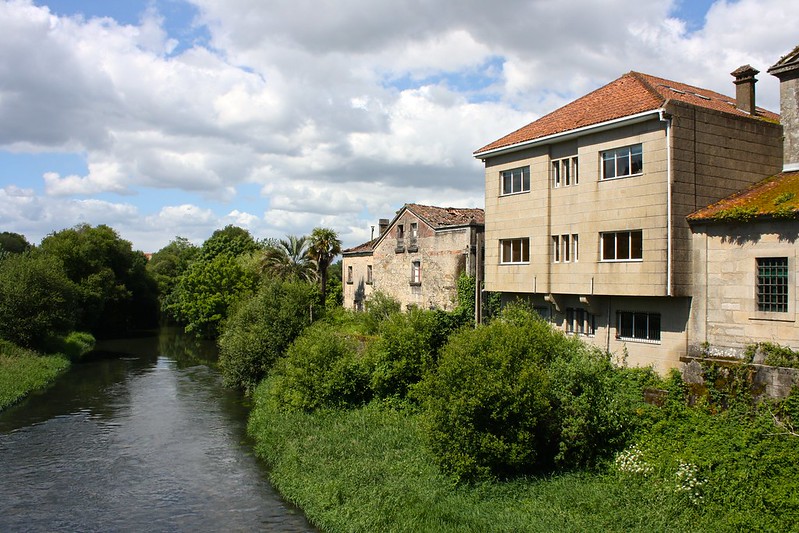
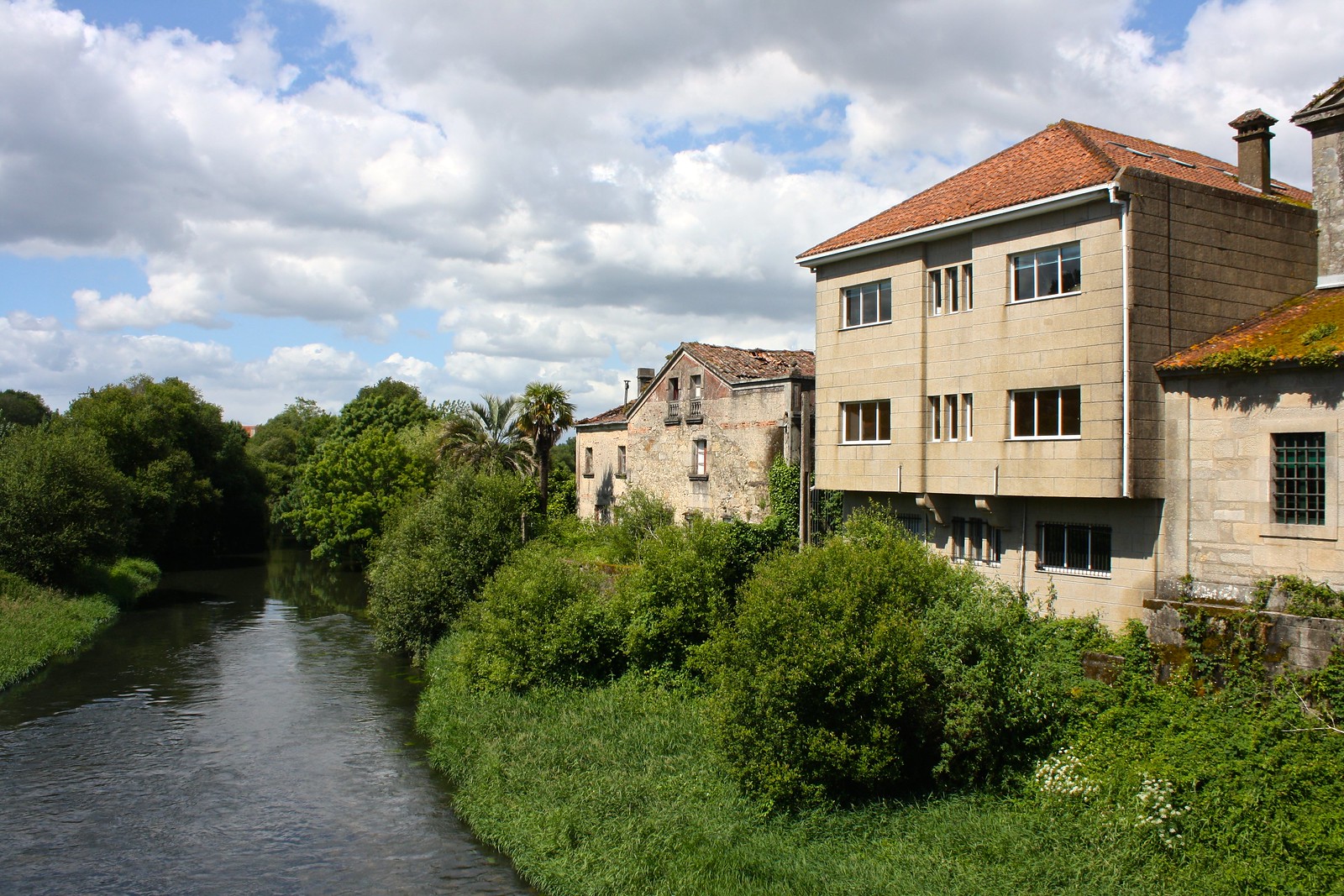 |
| Sar River |
A small but proud village of almost 9,000, Padrón dates back to Roman times when it was known as Iria Flavia (which is still the name of a parish to the north of the city center). Today, it’s known for producing peppers of the same name, for being a major stop along the Camino de Santiago, and for being home to two significant poets in the Galician language.
Peppers
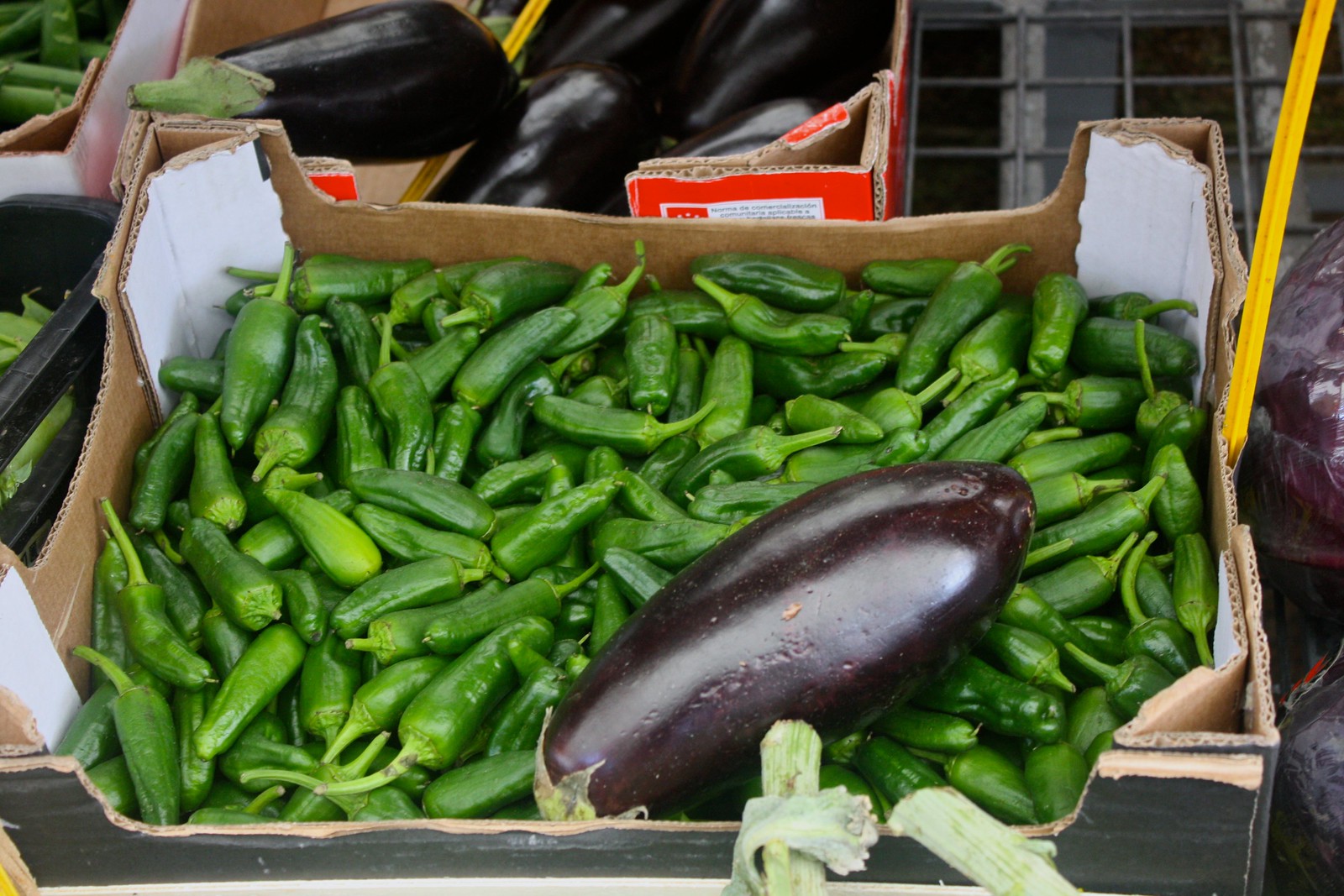 |
| Pementos de Padrón (ignore the eggplant) |
Even non-Galicians have heard of Padrón at least once, if only for the famous peppers that originated just outside the city center in the parish of Herbón. Brought to the area by Franciscan monks after the Spanish conquest of the Americas, these pimientos de Padrón have been cultivated for centuries and are now a part of the Spanish national cuisine.
 |
| Monument to “the Pementeira” or pepper-picker |
Typically fried in olive oil and garnished with chunky sea salt, they are rarely, if ever, spicy…however, they are infamous for heating up once in a blue moon. As the Galician saying goes, “Coma os pementos de Padrón: uns pican e outros non” (“Like Padrón peppers: some are spicy and others are not”). These peppers are in season from May to November, although every now and then you can find them in plastic bags in the supermarkets thanks to year-round greenhouses.
Pilgrims
 |
| Waymarkers for the Camino de Santiago |
As the final stage along the camino portugués or “Portuguese Way” of the Camino de Santiago pilgrimage route, Padrón sees hundreds of pilgrims pass through each day in the height of summer, and even in cold, rainy November, we drive by a handful of weary peregrinos trudging along who will arrive in Santiago later that day.
 |
| The storied pedrón |
Padrón plays an important role in the tradición Xacobea, or collection of stories and legends surrounding the life and death of the Apostle St. James the Greater. Foundational to the city of Santiago de Compostela is the claim that the cathedral guards the true remains, the relics, of St. James. According to legend, James came to Roman Hispania to evangelize after the death and resurrection of Jesus, stopping first in what was then Iria Flavia (modern-day Padrón). He traveled all around Spain, Mary appeared to him in Zaragoza, and he came back to Jerusalem where he was martyred. His disciples brought his body back to Spain and docked here in Padrón at a large mooring stone called the pedrón, where today’s city takes its name from. You can see the supposed stone in the Church of Santiago in downtown Padrón.
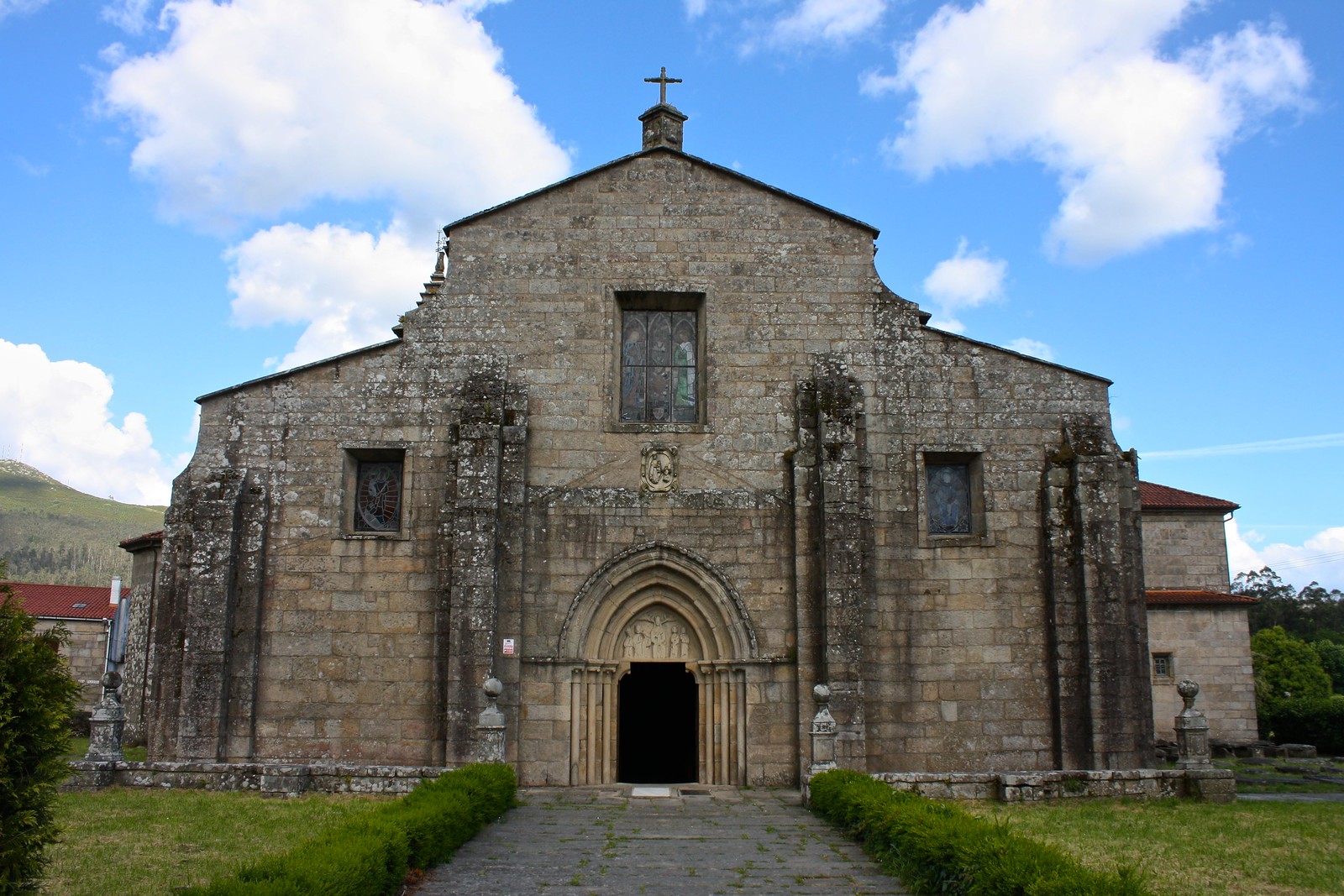 |
| Church of Santa María a Maior de Iria Flavia |
Iria Flavia (one of Padrón’s parroquias or parishes) was actually the region’s main cathedral city from Visigothic times onward, until the discovery of St. James’ remains caused the bishops to move to Compostela, where the cathedral has remained to this day. The former cathedral was destroyed in the year 999 in a raid by al-Mansur, the ruler of the Caliphate of Córdoba to the south. Although the contemporary church we see today was primarily designed in the Baroque style, it has a pointed Romanesque west portal and the cemetery outside holds the graves of 22 bishops.
Poets
 |
| Rosalía de Castro House-Museum |
Padrón is also famous for being home to perhaps the greatest of all writers in the Galician language, Rosalía de Castro (1837-1885). For centuries, galego (Galician) languished as stigmatized, rural dialect, while Castilian ruled the day in the courts and the cities. In the Middle Ages, Galician-Portuguese speakers were some of the most prolific and talented poets, among them even a king of Spain, Alfonso X. But when Castilian became the official language of the realm, Galician entered its own “Dark Ages.”
In the 1800s, however, there was a rexurdimento or “resurgence” of the written language, spearheaded by poets like Padrón local Rosalía. Her most famous works include Cantares Gallegos (“Galician Songs”) and Follas Novas (“New Leaves”). Today you can visit the house she lived in, which is now a museum dedicated to her legacy.
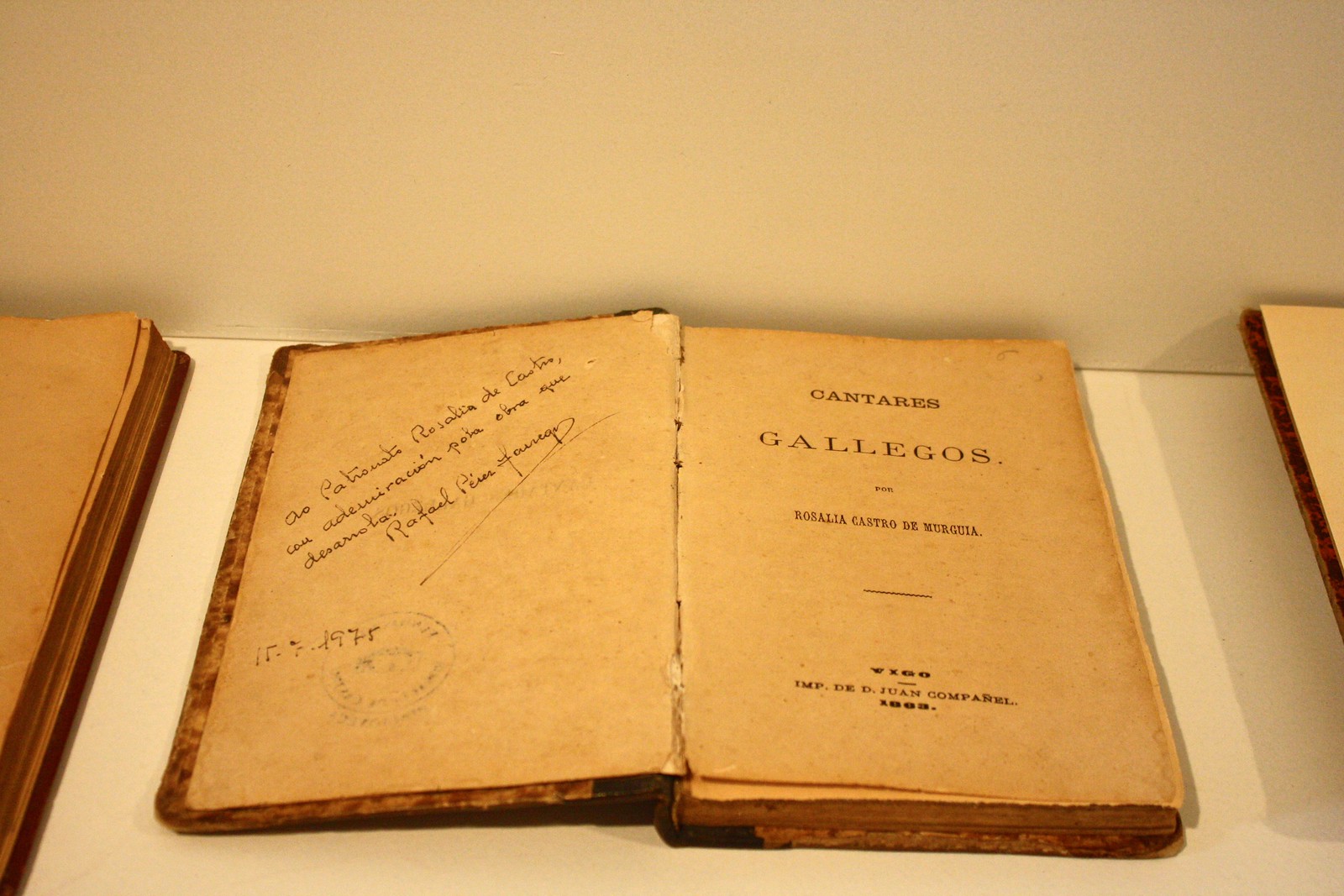 |
| An early printing of de Castro’s Cantares Gallegos |
Padrón also produced a recipient of the Nobel Prize in Literature, Camilo José Cela (1916-2002). I honestly don’t know that much about the author, but he wrote primarily in Spanish, publishing several acclaimed novels and short stories. Unfortunately, he left most of his inheritance to his second wife, who hasn’t cared much to share his papers with the Camilo José Cela Foundation, which operates a museum across the street from the church in Iria Flavia.
Town & Country
 |
| Old town |
Many villages in modern-day Galicia are the result of folks leaving rural areas and moving into new apartment blocks constructed in the last several decades, which were often designed in an ugly, brutalist manner. Thankfully, much of Padrón was built before this urbanizing rush, so the old town is a really charming place with pedestrianized streets, tiny plazas, and traditional, granite homes. Kids play soccer in the squares while their parents socialize over tapas, and old ladies strike up conversations with each other in the streets in between errands. There are even a few monumental churches and mansions.
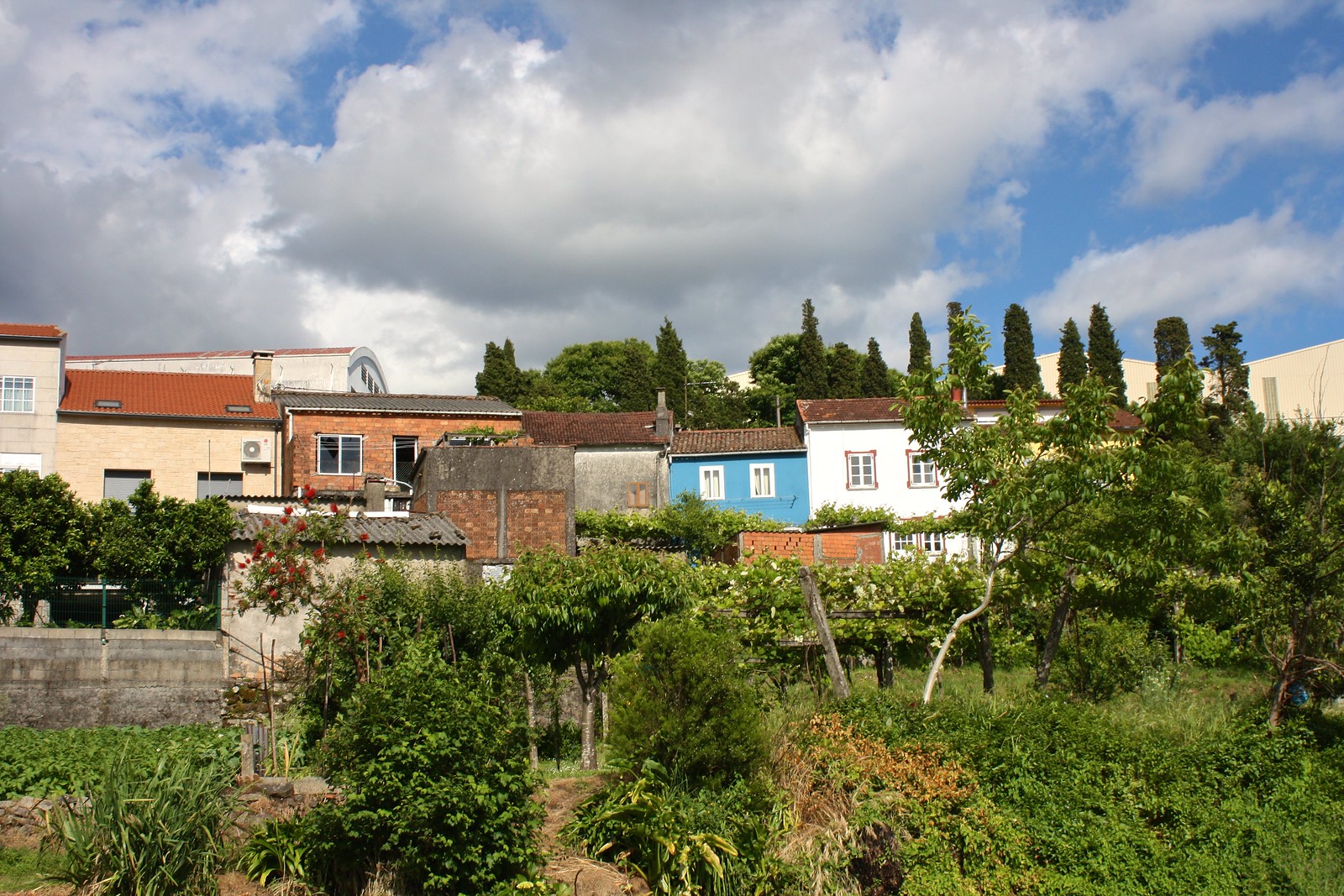 |
| Family farms |
But since Padrón is so small, the countryside is never far away. Out by the Rosalía de Castro House-Museum, or even the train station, you can get a taste for what Galicia has traditionally been for ages: a green, agricultural world divvied up into small family farms. Instead of cookie-cutter, shoulder-to-shoulder townhomes, the houses on these roomy plots are painted bright colors, as is the norm on the coast. If you get a chance, go for a brief stroll along one of these country roads and enjoy the vineyards, corn fields, and wild trees growing just feet from the city limits.
 |
| Sar River |
Did you know that the namesake of those famous mild peppers also held such cultural significance for Galicians? Tell me your reactions to Padrón below in the discussion thread.

